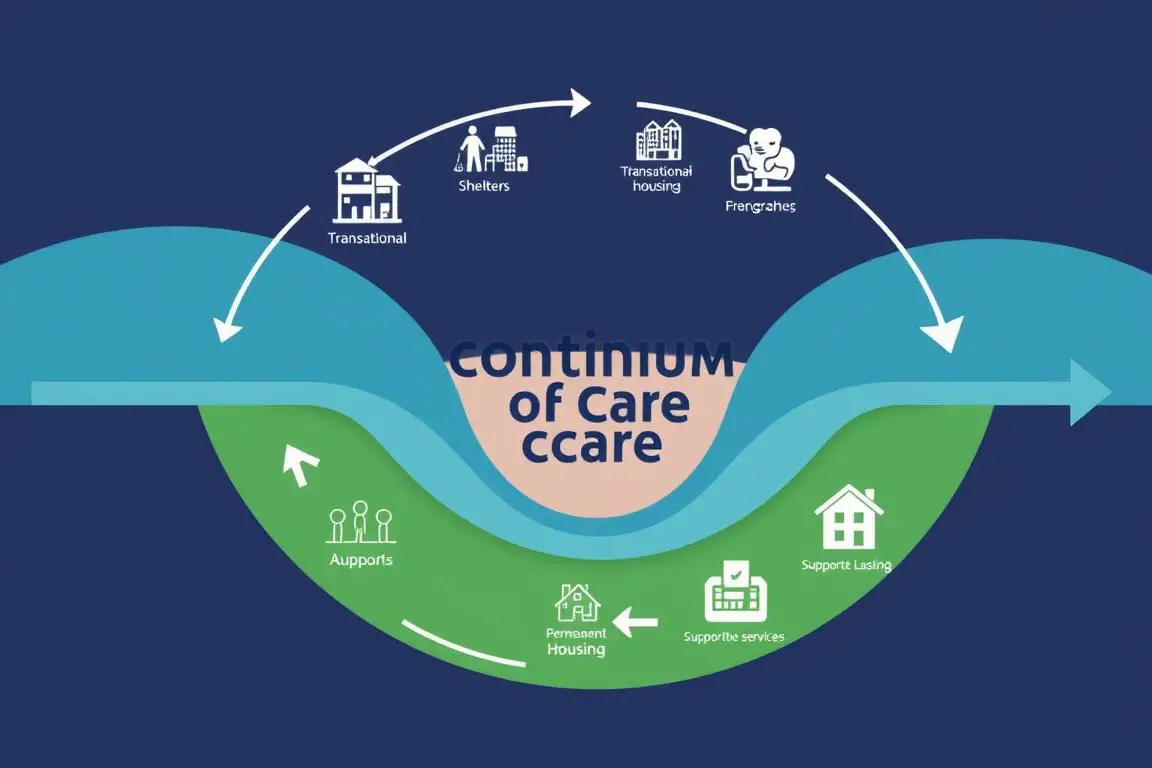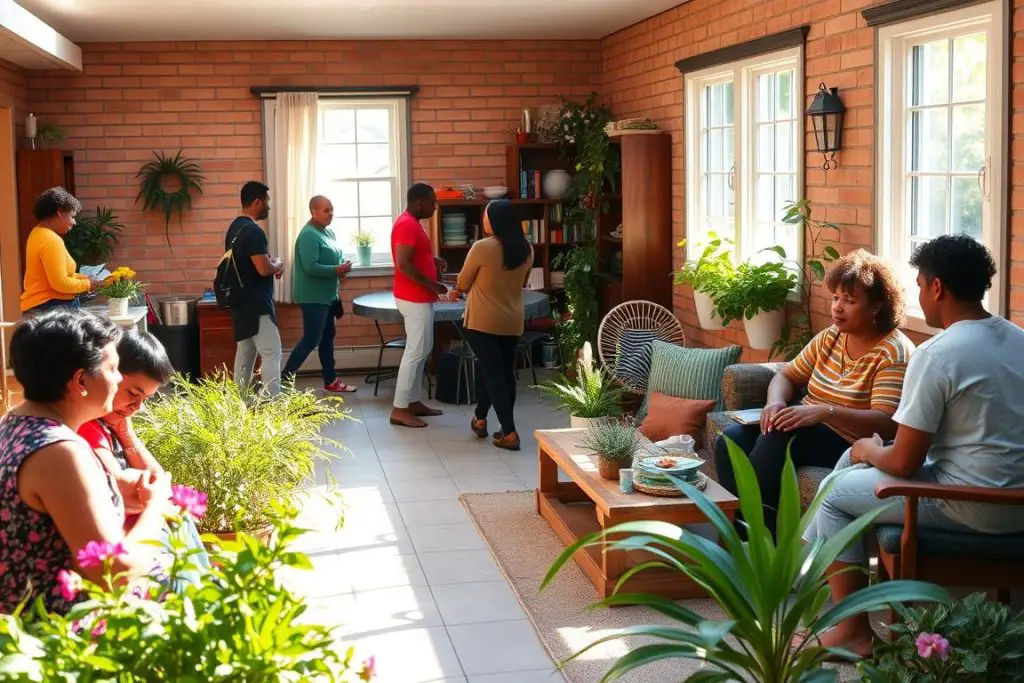Everything You Need to Know About Continuum of Care: A Lifeline for Housing Support Services

Picture a time when trouble hits hard, and having a safe home turns into a distant hope. This issue is more widespread than we might think, affecting countless people and families every day. Despite this challenge, the Continuum of Care (CoC) shines as a symbol of hope. It provides not just help, but a path towards stability and independence.
The Continuum of Care is more than a set of services; it embodies a full-circle approach to care. It brings together people from public offices and charities. They work together to make sure no one who is homeless or at risk gets overlooked. The CoC helps people by offering them homeless services that meet their specific needs at that moment. Using community resources, this cooperative approach weaves a detailed safety net that is both extensive and personally tailored.
Understanding how this system works is key. It matters if you’re a lawmaker, a community worker, or just a concerned person. Knowing about the CoC can change the game for those who need help. This article aims to walk you through the complexities of the CoC. It explains its crucial role in changing lives and communities for the better.
Key Takeaways
- Continuum of Care is a critical framework aimed at preventing homelessness and providing vital housing support.
- CoC programs are collaborative, pulling together a variety of stakeholders to offer comprehensive solutions.
- Understanding the CoC can empower you to participate in or advocate for better housing support services in your community.
- The CoC’s integrated approach ensures that a wide range of community resources are harnessed to assist those in need.
- Real-life impacts of CoC programs can be seen in the increased housing stability and quality of life for participants.
Understanding the Continuum of Care (CoC) Model
The Continuum of Care (CoC) model was created by the U.S. Department of Housing and Urban Development. It’s a detailed plan to fight homelessness through teamwork. By learning about this model, you’ll see how it uses a system to improve housing stability and help prevent homelessness.
Defining the CoC Approach
The CoC model brings together various services to help those without homes. It provides supportive services that do more than just offer shelter. These services also give vital help to ensure people can stand on their own over time. Over 100 organizations work as one in this model. Their goal is to make sure every service is helpful and wide-ranging.
The Importance of Coordinated Entry in CoC
Central to the CoC model is the coordinated entry system. This system makes getting help quick and direct. It puts those in greatest need first. This helps cut down the time people are without a home. Coordinated entry opens the door to many resources. It ensures help is given out fairly and quickly, which is key in stopping homelessness.
Assessment of Community Resources and Needs
For the CoC model to work, evaluating the community regularly is essential. This checks what help is available and sees where more is needed. By constantly checking and getting feedback, the model can change and grow. It makes sure the help given meets what the community needs as it changes.
| Feature | Benefits |
|---|---|
| Coordinated Entry | Quick, fair access to resources, prioritization based on need |
| Supportive Services | Includes healthcare, job training, education services |
| Community Assessment | Regular evaluations to adapt to community needs and resources |
How CoC Enhances Housing Stability and Homelessness Prevention
The Continuum of Care (CoC) model is vital for promoting housing stability and preventing homelessness. It includes supportive services and transitional housing programs. These programs are powerful tools in fighting homelessness, as shown by successful case studies.
Overview of Supportive Services Offered
Supportive services in the CoC help people get and keep stable homes. Services range from career counseling to mental health support. They tackle the root causes of homelessness, making them key to preventing it.
Transitional Housing Programs and Their Impact
Transitional housing is crucial for giving those in crisis a temporary safe place. It serves as a step towards permanent housing. It gives people stability and time to regain their independence.
Success Stories: Case Studies on Housing Stability
Many success stories show the power of the CoC model. Real-life examples reveal how people used these programs to find stable homes. Through transitional housing and supportive services, they overcame major obstacles.
| Year | Participants | % Achieving Stable Housing |
|---|---|---|
| 2019 | 1,200 | 78% |
| 2020 | 1,500 | 85% |
| 2021 | 1,700 | 90% |
These numbers show a clear improvement in reducing homelessness over time. This marks the success of these programs in helping people find stable housing.
Conclusion
The journey through the Continuum of Care (CoC) has shown us its crucial role. It’s like a beacon of hope for those struggling with housing issues. CoC brings together community resources in a powerful way. This helps people rebuild their lives with stable housing.
CoC is more than just an idea. It’s a living, changing system that helps the community. It always adapts to meet changing needs.
You’ve seen how CoC’s teamwork is key to its success. It brings together different people and services to tackle a big problem. Strong communities are built on this kind of support. CoC helps those close to homelessness, giving them hope and respect.
Whether you’re an advocate, volunteer, or policy supporter, you play a big part. Your efforts help keep this important support system going.
Finally, CoC’s efforts against homelessness are making a big difference. It changes lives and strengthens society’s will to ensure everyone has a home. Your involvement with CoC is very important. It shows that helping our fellow citizens builds a stronger community for everyone.







